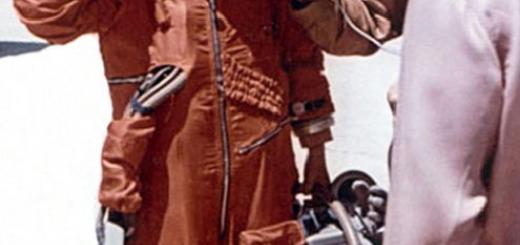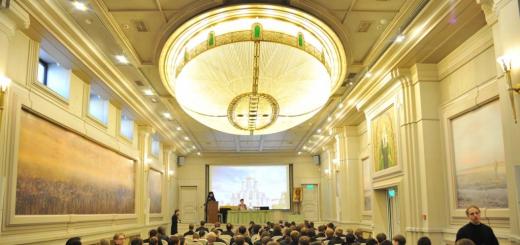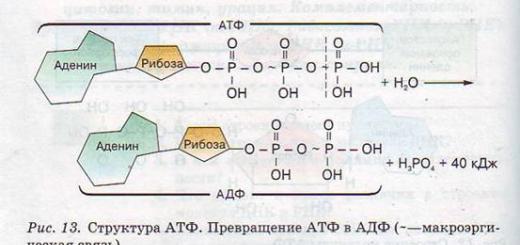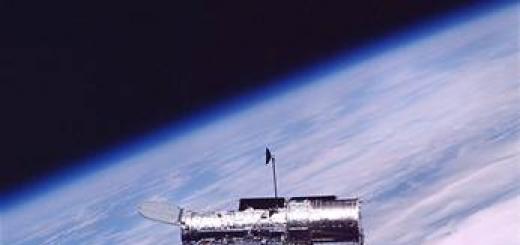From the moment of the first flight into space, everyone recognized Yuri Gagarin a new, especially important one has appeared. This work is distinguished by special specifics, special training and, of course, special clothing. The main clothing of an astronaut is spacesuit, they come in several types depending on their purpose. There are spacesuits for outer space, and there are ones for being in the cockpit itself.
Like any clothing, an astronaut suit should be comfortable for both vigorous movement and relaxation. The suit is divided into several layers:
- Underwear. The spacecraft uses disposable underwear; after wearing, the set is simply disposed of and a new one is opened;
- Flight suit. This is clothing for being in the cabin, working and resting; this layer follows immediately after underwear and can also be disposable;
- Heat protective suit. This is clothing used in emergency conditions, if the heating system breaks down or when landing in cold parts of our planet.
Currently, most astronaut clothing sets are designed for one-time use; to use conventional suits, it is necessary to equip the spacecraft with the ability to wash them, and similar projects are still in the works.
Big Leap. Spacesuit. Evolution
Lingerie
Like any underwear, the first layer of a modern astronaut's suit comes into direct contact with the skin, which means it should be pleasant to the touch. Linen and cotton are best suited for this function. In addition to pleasant tactile sensations, the fabric must have the required elasticity so as not to impede movement, absorb moisture and allow air to pass through.

The best option, according to numerous studies, is knitted cotton; a small portion of artificial fibers is added to increase strength. Viscose was chosen as a similar synthetic fiber. This option has been confirmed by numerous experiments; even after ten days of constantly wearing it under a spacesuit, it does not cause irritation on the skin and perfectly absorbs all skin secretions, which is especially important because high-quality hygiene procedures are not provided in the spacecraft.
The latest development of this type of clothing is the option of antimicrobial underwear. It is suitable for long flights, does not allow irritation to develop and successfully absorbs all secretions over time.
Flight suit
The second layer of an astronaut’s clothing after underwear is a flight suit; in particularly difficult conditions it is replaced by a spacesuit. The suit should not restrict movement and be comfortable to wear; during its manufacture, it is also necessary to take into account all the necessary sensors that are attached to the clothing of a representative of this profession. The flight suit is made strictly for a specific ship, taking into account humidity, temperature and pressure in the cabin.

Space suit for going to the lunar surface
and autonomous backpack life support system (ARLS)
- Sealed helmet;
- Autonomous backpack life support system control panel;
- Input and output connectors for connecting water hoses of the life support system;
- Flashlight pocket;
- Input and output connectors for connecting oxygen hoses of the life support system;
- Cables of communication equipment, ventilation and water hoses of the cooling system;
- Pocket for lunar soil samples;
- Covers on boots;
- A reinforcing layer of metal fabric to protect against cooling and micrometeorite impacts;
- Covered with a valve, there is a connector for connecting a urine collection bag, an injection hole, a dosimeter and a bag with medicines on a cord;
- Gloves;
- Pressurized spacesuit shell;
- Connecting parts of the pressure suit shell (turned away);
- Purified oxygen input connector;
- Pocket for sunglasses;
- Connector for connecting the cable of communication equipment;
- Oxygen purification system control panel;
- Autonomous backpack life support system;
- Oxygen purification system.
The best. Spacesuit "Orlan-MK"
Autonomous backpack life support system (ARLS)
- Oxygen purification system;
- Emergency oxygen supply unit (AZK). High pressure oxygen cylinder;
- Gas station block. Low pressure oxygen supply system (for breathing, ventilation and maintaining boost pressure in the spacesuit);
- Communication and telemetry equipment;
- Electrical connection block;
- Water tank for the thermal control system;
- Fan;
- Astronaut liquid cooling system;
- Main oxygen supply system. Oxygen cylinder;
- Connectors for recharging oxygen and water tanks.
The material used to make such a suit must meet many criteria so as not to complicate the astronaut’s work. The main qualities are elasticity, wear resistance, heat resistance, lightness, and dust-repellent properties. The design of the suit itself usually takes into account the preferences of its owner; if a universal type suit is made, then the model is made in classic, calm shades.
The suit is made from a mixture of synthetic and natural fabrics. Synthetics have greater wear resistance and heat resistance, but synthetics create static electricity around themselves, which is unacceptable in an astronaut suit, so it must be diluted with natural fabrics.
New space suit 2017
Heat protective suit
A thermal protective suit is made just in case and its main task is to warm the astronaut. In addition to the suit itself, a representative of this profession is allowed to use woolen socks and a hat. The last third layer of clothing is made according to the same criteria: elasticity of the fabric, ease of fit, a mixture of natural and synthetic fibers. Added to this outer suit is resistance to environmental conditions. The suit itself consists of two parts: a lining and a top layer.
The main material is wool, it warms best and is quite comfortable to wear. Such thermal suits differ in the degree of protection from the cold: summer, wool, transitional, winter, arctic, and especially arctic. Similar costumes come with hats of the same type. The most popular hat model is a headdress with a visor and a lapel. The cap is made a little lighter than the suit and should not touch the hair or be too hot. After this headdress there may be a helmet; it can be either part of a suit or another part of a set of warm clothes. In addition to the head, the helmet protects a significant part of the chest, shoulders and back due to the wide shirtfront. It is possible to attach sensors necessary for communication to the helmet.
The last piece of the thermal suit is the shoes. It is made individually according to the astronaut’s leg and is particularly light and warm. All three layers of clothing are made to allow the wearer to remain in zero gravity. All parts of the costumes are carefully attached to them and at the same time allow this to be done as quickly as possible. All materials for making suits undergo many tests to ensure their comfort and safety. Nothing in the spacecraft should create inconvenience or additional difficulties in work, therefore the suits are developed with a particularly careful approach to this type of clothing.
Astronaut's spacesuit. What is it made of?
Federal state government educational institution
"Ulyanovsk Guards Suvorov Military School
Ministry of Defense of the Russian Federation"
Competition "Through Hardships to the Stars"
Applications
Annex 1
Astronaut spacesuit


Astronaut's spacesuit for spacewalk:
1 – safety cord; 2 – life support system control panel; 3 – pressure helmet; 4 – backpack life support system
Appendix 2
Evolution of spacesuits



In these spacesuits, Russian mongrels were the first earthlings to overcome the planet's gravity
The SK-1 spacesuit of the first cosmonaut Yuri Gagarin, in which he orbited the Earth on April 12, 1961.
In the Berkut spacesuit, A. Leonov went into outer space. The suit is designed for two gas pressure values: working 400 hPa and emergency 270 hPa.



Russian Orlan spacesuits for spacewalks
In the dorsal backpack « Orlana"cylinders with a gas mixture for breathing, pumps, a heat receiver and other life support devices are placed.
New Orlan-ISS spacesuits for Russian cosmonauts will be delivered to the International Space Station in the fall of 2015. They will replace the Orlan-MK currently in use.
Appendix 3
Comparative characteristics of spacesuits
SK-1 (rescue suit-1) - first spacesuit, which was developed in USSR for flights first cosmonauts on spaceships of the "East"and was used in 1961-1963.
"Golden eagle" - type of universal space spacesuit. The suit was developed in USSR in 1964-1965 and was intended to ensure safe human spacewalk and rescue in case of depressurization of a spacecraft. Refers to spacesuits of the “soft” type, that is, without a rigid frame.[ 4 ]
"Orlan-MKS" - type of space spacesuit, created in USSR for safe stay and work
Orlan-DMA
Orlan-M
Orlan-MK (modernized, computerized)
Orlan-MKS (modernized, computerized, synthetic)
Exploitation
Salyut-6, 1977-1979; Salyut-7, 1982-1984
Salyut-7, Mir,
1985-1988
World, 1988-1997
World, 1997-2000; ISS, 2001-2009
ISS, 2009-present
ISS, planned from 2015
Manufacturer
NPP "Zvezda"
NPP "Zvezda"
NPP "Zvezda"
NPP "Zvezda"
NPP "Zvezda"
NPP "Zvezda"
Working
pressure
400 hPa
400 hPa
400 hPa
400 hPa
400 hPa
400 hPa
Weight
73.5 kg
88 kg
105 kg
112 kg
120 kg
110 kg
Time
autonomy
5 o'clock
6 hours
7 o'clock
7 o'clock
7-8
7 o'clock
Purpose
Working in outer space
Working in outer space
Working in outer space
Working in outer space
Working in outer space



Main differences:
Automatic thermal control system.
Replacing the rubber shell with a polyurethane one. The use of new material will increase the service life of spacesuits in orbit;
Automation of preparing a spacesuit for spacewalks.
Appendix 6
Future suit




In Ancient Greece, good swimmers or divers were called “suits.” But as human technology developed, all means of human protection began to be called this, allowing one to penetrate into environments where an unprotected human body would face a quick and not always easy death. First under water, then into the air, and more recently beyond the Earth.
History of the spacesuit
The word “spacesuit” in its modern sense was first used in 1775 by the French abbot-mathematician Jean Baptiste de la Chapelle. That's what he called his cork suit, which was supposed to help soldiers cross rivers. The idea was picked up, and by the middle of the 19th century, divers were a regular unit in all major naval fleets. In the twenties of the 20th century, the English physiologist John Holden proposed the use of diving suits to protect the health and life of balloonists. He also designed the first such spacesuit and tested it in a pressure chamber, simulating pressure equivalent to that formed at an altitude of 25 km. But he failed to raise money to build a balloon to ascend into the stratosphere, and the suit was not tested in practice.
After the end of World War II, rapid progress began in jet aviation and people began to climb higher and higher into the air. And to conquer new heights, a space suit was needed.
Our first projects and foreign ones
The creation of a spacesuit is one of the most technologically complex and key programs of the space project. And progress in this area was achieved through the rivalry of two space superpowers.
In our country, Evgeny Chertovsky from the Institute of Aviation Medicine was the first to work on space suits. In the forties, he developed 7 types of sealed equipment and was the first in the world to solve the problem of mobility by designing a 4-2 model with hinges. Since 1936, the specially created Central Aerohydrodynamic Institute began to deliberately develop cosmonaut spacesuits. As a result, model 4-3 already contained almost all the parts that are used in modern spacesuits. In the post-war years, the Flight Research Institute began to design spacesuits. And in October 1952, in Tomilino near Moscow, engineer Alexander Boyko created a special workshop at plant No. 918 (today it is the Zvezda Research and Production Enterprise). It was on it that Gagarin’s spacesuit was created. If in our country tests of new equipment were carried out by pilots, then the Americans came to create their own version of the spacesuit through the stratospheric program. In the early sixties, several stratospheric balloons were built to test space and aviation suits, equipped with open gondolas for landing from high altitudes.
The program turned out to be deadly - three of the six stratonauts died. But in the end, the Excelsior project ended in success. On August 16, 1960, Joseph Kittinger set several records at once. His fall from the stratosphere lasted 4 minutes 36 seconds, during which the pilot flew 25,816 meters, reaching a speed of about 1000 km/h.
What is a modern spacesuit?
A modern space suit must solve several important problems at once. As pressure drops, it becomes increasingly difficult for the human body to absorb oxygen. Without problems, a person can be at an altitude of no more than 4-5 km. At high altitudes, it is necessary to add oxygen to the inhaled air, and from 7-8 km a person must breathe pure oxygen. When rising to a height above 12 km, the lungs lose the ability to absorb oxygen and pressure compensation is necessary.
Today, there are two types of pressure compensation: mechanical compensation and the creation of a gas environment with excess pressure around a person. The first option is high-altitude compensation flight suits. The pilot's body is entangled with ribbons resembling a figure eight, through which a rubber bladder is inserted.
In the event of depressurization, compressed air is supplied to the chamber, it increases in diameter, reducing the diameter of the ring entangling the pilot. However, a pilot can spend no more than 20 minutes in a depressurized cabin. The second way is a spacesuit. Essentially, it is a sealed bag in which excess pressure is created. The time a person spends in a spacesuit is practically unlimited, but mobility is significantly limited. The overpressure sleeve of a spacesuit is actually an air beam with a pressure of 0.4 atmospheres. Bending your arm in such conditions is like bending an inflated car tube. Therefore, the spacesuit is made composite, and one of the most complex technologies is the production of special “soft” hinges.
The suit consists of two shells: an internal sealed shell and an external power shell. The first consists of sheet rubber, for the production of which high-quality rubber is used. The outer shell is fabric (Americans use nylon, we use the domestic equivalent, nylon). It protects the rubber shell from damage and keeps its shape. Very similar to the structure of a soccer ball, where a leather cover protects the inflated rubber bladder. A person cannot stay in a “rubber bag” for a long time, so the spacesuit has a ventilation system.
The first spacesuits worked on the ventilation principle, throwing used air out, like scuba gear. The first SK-1 spacesuits, the “Berkut” spacesuit, in which Leonov went into outer space, and the “Falcon” rescue spacesuits were designed according to this principle. However, they were not suitable for long-term stays in outer space and for the American lunar program. For these purposes, regeneration spacesuits were developed (Soviet Orlan and Krechet and American A5L, A6L, A7L). In them, the exhaled gas is regenerated, moisture is removed from it, the air is again saturated with oxygen and cooled.
A special mesh water cooling suit is worn under the spacesuit. And the screen-vacuum insulation of the outer suit works on the principle of a thermos and consists of several layers of special polyethylene film coated with aluminum. As a result, the impact of both extremely high and extremely cold temperatures is neutralized.
Take care of your head
The helmet is one of the most complex parts of a spacesuit. In the “aviation era” there were two types of helmets: masked (the pilot used an oxygen mask) and maskless (the helmet was separated from the rest of the spacesuit by a sealed curtain and became one large oxygen mask with a continuous supply of breathing mixture). In the end, the maskless concept won, which provided better ergonomics, although it required more oxygen consumption. This is exactly how helmets for space began to be made, which in turn were divided into removable and non-removable. The first SK-1 was equipped with a non-removable helmet, but Leonov’s “Berkut” and “Yastreb” were removable. Moreover, they were connected by a special hermetic connector with a hermetic bearing, which made it possible for the astronaut to turn his head. But the additional mobility resulted in a cumbersome design and was later abandoned.
A mandatory element of a helmet for spacewalks is a light filter. The first models used airplane-type filters coated with a thin layer of silver. But their protective properties turned out to be insufficient and later the light filters of the spacesuits began to be sprayed with a rather thick layer of pure gold, ensuring the transmission of only 34% of the light. It is almost impossible to break the “glass” of the helmet: it is made of heavy-duty Lexan polycarbonate. As a result, this miracle of engineering is incredibly expensive - a modern American helmet costs about $12 million; Russian, as often happens, is somewhat cheaper.
Spacesuits of the future
It is no secret that the space programs of both the USSR and the United States were a large part of the global military rivalry. The collapse of the USSR sharply slowed down progress in this area. For a long time, our country had no time for space, and only recently the latest Soviet developments were pulled out from under the carpet. Funding for the American program was also significantly reduced (expeditions to Mars, Venus, asteroids and again to the Moon were postponed indefinitely). China does not yet pretend to be original and dresses its taikonauts in costumes made on the basis of Soviet ones.
So for now, without specific, targeted funding projects, designers are having fun creating costumes a la Hollywood. The American promising project Z-1, for its resemblance to the cartoon character’s outfit, was nicknamed “Buzz Lightyear’s spacesuit.” And the promising brainchild from Roscosmos is perfect for either RoboCop or the Terminator.
The idea of creating a spacesuit appeared in the 19th century, when the science fiction genius Jules Verne published his “From the Earth to the Moon by a direct route in 97 hours 20 minutes.” Being familiar with science, Vern understood that the space suit would go a long way in its development and would be completely different from the diving one.
Today's spacesuits are a complex set of clothing and devices that serve to protect humans from the adverse factors of space travel. In parallel with the evolution of this complex, the flight range increased and the nature of the work performed by astronauts became more complex. We have followed the history of the development of spacesuit construction from the beginning of the last century to the present day.

This is how scientists imagined the spacesuit of future cosmonauts in 1924. At that time, they already understood that a space suit should be different from a diving suit. However, the development of a fundamentally new suit was still carried out on its basis.
X-15

In 1956, the US Air Force began developing high-altitude suits designed to protect a person from pressure changes. Despite its funny appearance, it was quite possible to move in this spacesuit. But this prototype never entered production.

Rescue suit-1 was developed in the USSR in 1961 for flights on Vostok series ships. The first spacesuits were made according to the sizes of the cosmonauts selected for the flight - Yu. Gagarin and his backups - G. Titov and G. Nelyubov.

Alan Shepard, who participated in the first space flight of American astronauts, Mercury 7, in 1961, wore just such a suit. This suit did not change its shape well, and under high pressure the astronauts were practically immobilized.

Also known as the AX1-L, it was produced in 1963. Black rubber coils on the knees, elbows and hips allow astronauts to flex their limbs freely. A support system of straps on the chest keeps the suit from expanding too much. Without it, the pressure suit would have inflated like a balloon.

ILC Industries, a company contracted with NASA to develop space suits, created the A5-L in 1965. The prototype was made of blue nylon. The astronauts who landed on the Moon for the first time wore a modified version of this suit.

Developed by Gus Grimsson in the same 1965 G3-C, the spacesuit consisted of 6 layers of white nylon and one layer of Nomex (fireproof material). Multi-colored valves on the suit served to ventilate the air in it. Blue ones are for pumping “good” air inside, red ones are for removing carbon dioxide.

The Hawk prototype was created and tested in 1967. It was a soft type spacesuit with a removable metal helmet. The first cosmonauts to use the Yastreb spacesuit were E. Khrunov and A. Eliseev during the flight of the Soyuz-4 and Soyuz-5 spacecraft.

AX-2 was made of fiberglass and layered foam. Its prototype was developed at the Ames Research Center, a branch of NASA, in 1968. Steel springs at the waist allowed the astronauts to bend over easily, but this bulky suit had a significant drawback: it was very awkward to move around in the cramped confines of a spacecraft.

"Orlan" was created in the USSR to protect cosmonauts when working in outer space. This spacesuit model was created in 1969 and has been constantly modified and improved since then. Currently, a modified version of Orlan ensures safe extravehicular activities for astronauts from the ISS.

The Z-1 was designed and engineered by ILC Dover and was named the best invention of 2012 by Time magazine. A combination of nylon and polyester is used for more effective pressure control. And to speed up the dressing process, the entrance to the spacesuit is located at the back, unlike previous models.
According to the engineers' idea, the elastic fabric of the new generation spacesuit will be lined over the entire area with thin threads of nickel-titanium alloy. Connected to a power source, the suit will cause the threads to contract, tightly fitting the astronaut's body. In such protective clothing, people will be able to easily move on the surface of other planets.
aslan wrote in April 12th, 2017Few people know that only one component was fully prepared and tested for the Soviet expedition to the Moon - the Krechet lunar space suit. Even fewer people know how it works.

With the development of jet aviation, the problems of protecting and rescuing the crew during high-altitude flights arose seriously. As pressure drops, it becomes increasingly difficult for the human body to absorb oxygen; an ordinary person can be at an altitude of no more than 4-5 km without any problems. At high altitudes, it is necessary to add oxygen to the inhaled air, and from 7-8 km a person generally must breathe pure oxygen. Above 12 km, the lungs completely lose the ability to absorb oxygen - pressure compensation is required to rise to a higher altitude.
Today, there are only two types of pressure compensation: mechanical and the creation of a gas environment with excess pressure around a person. A typical example of a solution of the first type is high-altitude compensation flight suits - for example, VKK-6, used by MiG-31 pilots. In the event of depressurization of the cabin, such a suit creates pressure, compressing the body mechanically. This costume is based on a rather ingenious idea. The pilot's body is entangled with ribbons resembling a figure eight.

A rubber bladder is inserted into the smaller hole. In the event of depressurization, compressed air is supplied to the chamber, it increases in diameter, correspondingly reducing the diameter of the ring entangling the pilot. However, this method of pressure compensation is extreme: a trained pilot in a compensating suit can spend no more than 20 minutes in a depressurized cabin at an altitude. And it is impossible to create uniform pressure on the entire body with such a suit: some areas of the body are overtightened, some are not compressed at all.

Another thing is a spacesuit, which is essentially a sealed bag in which excess pressure is created. The time a person spends in a spacesuit is practically unlimited. But it also has its drawbacks - limiting the mobility of the pilot or astronaut. What is a spacesuit sleeve? In practice, this is an air beam in which excess pressure is created (in spacesuits, a pressure of 0.4 atmospheres is usually maintained, which corresponds to an altitude of 7 km). Try bending an inflated car inner tube. A bit difficult? Therefore, one of the best-kept secrets in spacesuit production is the technology for producing special “soft” joints. But first things first.
"Vorkuta"
The first spacesuits, manufactured before the war at the Leningrad Institute named after. Gromov, were created for research purposes and were used mainly for experimental flights in stratospheric balloons. After the war, interest in spacesuits was renewed, and in 1952, a special enterprise for the production and development of such systems was opened in Tomilin near Moscow - Plant No. 918, now NPP Zvezda. During the 50s, the company developed a whole line of experimental spacesuits, but only one of them, Vorkuta, created for the Su-9 interceptor, was produced in a small series.
Almost simultaneously with the release of Vorkuta, the company was given the task of developing a spacesuit and rescue system for the first cosmonaut. Initially, the Korolev Design Bureau issued Zvezda a technical assignment for the development of a spacesuit that was entirely connected to the ship’s life support system. However, a year before Gagarin’s flight, a new assignment was received - for a conventional protective suit, designed to save the astronaut only during his ejection and splashdown.

Opponents of the spacesuits considered the likelihood of the ship depressurizing to be extremely low. Another six months later, Korolev again changed his mind - this time in favor of spacesuits. Ready-made aviation spacesuits were taken as a basis. There was no time left for docking with the ship’s on-board system, so an autonomous version of the spacesuit’s life support system was adopted, located in the cosmonaut’s ejection seat.

The shell for the first space suit SK-1 was largely borrowed from Vorkuta, but the helmet was made completely new. The task was set extremely strictly: the spacesuit had to save the astronaut! No one knew how a person would behave during the first flight, so the life support system was built in such a way as to save the astronaut even if he lost consciousness - many functions were automated. For example, a special mechanism was installed in the helmet, controlled by a pressure sensor. And if it fell sharply in the ship, a special mechanism instantly slammed the transparent visor, completely sealing the spacesuit.

Layer by layer
Spacesuits consist of two main shells: an internal sealed shell and an external power shell. In the first Soviet spacesuits, the inner shell was made of sheet rubber using a simple gluing method. The rubber, however, was special; high-quality natural rubber was used for its production. Starting with the Sokol rescue suits, the sealed shell became rubber-fabric, but in spacesuits intended for spacewalks, there is no alternative to sheet rubber yet.
“Lunar” spacesuit of astronauts participating in the Apollo missions.
The outer shell is fabric. Americans use nylon for it, we use the domestic analogue, nylon. It protects the rubber shell from damage and keeps its shape. It’s hard to come up with a better analogy than a soccer ball: a leather outer cover protects the inner rubber bladder from football players’ boots and ensures the ball’s geometric dimensions remain unchanged.
No person can spend a long time in a rubber bag (those who have army experience of forced marches in a rubberized combined arms protective kit will understand this especially well). Therefore, every spacesuit must have a ventilation system: through some channels, conditioned air is supplied to the entire body, through others it is sucked out.
According to the method of operation of the life support system, spacesuits are divided into two types - ventilation and regeneration. In the first, simpler in design, the used air is thrown out, similar to modern scuba gear. The first SK-1 spacesuits, Leonov’s spacewalk suit “Berkut” and light rescue suits “Falcon” were designed according to this principle.
Thermos
For a long stay in space and on the surface of the Moon, long-term regeneration suits were required - “Orlan” and “Krechet”. In them, the exhaled gas is regenerated, moisture is removed from it, the air is saturated with oxygen and cooled. In fact, such a spacesuit replicates in miniature the life support system of an entire spacecraft. Under the spacesuit, the astronaut wears a special mesh water-cooling suit, all pierced with plastic tubes containing coolant. Heating problems in exit suits (intended for spacewalks) never arose, even if the astronaut worked in the shade, where the temperature rapidly drops to -100C.

The fact is that the outer overalls ideally serve as heat-protective clothing. For this purpose, screen-vacuum insulation, operating on the principle of a thermos, was used for the first time. Under the outer protective shell of the overalls there are five to six layers of a special film made of a special polyethylene, terifthalate, with aluminum sprayed on both sides. In a vacuum, heat exchange between film layers is possible only due to radiation, which is reflected back by the mirror aluminum surface. External heat transfer in a vacuum in such a spacesuit is so small that it is considered equal to zero, and only internal heat transfer is taken into account in the calculation.


For the first time, screen-vacuum thermal protection was used on the Berkut, in which Leonov went into outer space. However, under the first rescue suits, which did not work in a vacuum, they wore a TVK (thermal protective ventilated suit), made of warm quilted material, in which the ventilation lines were laid. This is not the case in modern Falcon rescue suits.

In addition to all this, the astronauts wear cotton underwear with a special antibacterial impregnation, under which there is the last element - a special bib with telemetric sensors attached to it, transmitting information about the state of the astronaut’s body.
Falcons
Spacesuits were not always on ships. After six successful flights of the Vostoks, they were recognized as useless cargo, and all further ships (Voskhod and Soyuz) were designed to fly without standard spacesuits. It was advisable to use only external spacesuits for spacewalks. However, the death of Dobrovolsky, Volkov and Patsayev in 1971 as a result of depressurization of the Soyuz-11 cabin forced us to return to a proven solution. However, the old spacesuits did not fit into the new ship. They urgently began to adapt the “Falcon” light suit, originally developed for the T-4 supersonic strategic bomber, to suit space needs.

The task was not easy. If during the landing of the Vostok the cosmonaut ejected, then the Voskhod and Soyuz carried out a soft landing with the crew inside. It was only relatively soft - the impact upon landing was noticeable. The shock was absorbed by the Kazbek energy-absorbing chair, developed by the same Zvezda. “Kazbek” was molded individually for each cosmonaut who lay in it without a single gap. Therefore, the ring to which the spacesuit helmet is attached would certainly break the astronaut’s cervical vertebra upon impact.

In "Falcon" an original solution was found - a sector helmet that does not cover the back of the spacesuit, which is made soft. A number of emergency systems and a heat-protective layer were also removed from the Falcon, since in the event of a splashdown when leaving the Soyuz, the cosmonauts had to change into special suits. The life support system of the spacesuit was also greatly simplified, designed for only two hours of operation.

As a result, “Falcon” became a bestseller: since 1973, more than 280 of them have been produced. In the early 90s, two Falcons were sold to China, and the first Chinese cosmonaut flew to conquer space in an exact copy of the Russian spacesuit. True, unlicensed. But no one has sold spacesuits for outer space to the Chinese, so they don’t even plan to go into outer space yet.
Cuirassiers
In order to facilitate the design and increase the mobility of external spacesuits, there was a whole direction (primarily in the USA) that studied the possibility of creating all-metal rigid spacesuits reminiscent of deep-sea diving suits. However, the idea found partial implementation only in the USSR. The Soviet spacesuits "Krechet" and "Orlan" received a combined shell - a hard body and soft legs and arms. The body itself, which designers call a cuirass, is welded from individual elements of an AMG type aluminum alloy. This combined scheme turned out to be extremely successful and is now being copied by the Americans. And it arose out of necessity.

The American lunar spacesuit was made according to the classical design. The entire life support system was located in a leaky backpack on the astronaut's back. Soviet designers might also have followed this scheme, if not for one “but”. The power of the Soviet N-1 lunar rocket made it possible to deliver only one cosmonaut to the Moon, unlike two American ones, and it was not possible to put on a classic spacesuit alone. That's why the idea of a rigid cuirass with a door on the back for entry inside was put forward.


A special cable system and a side lever made it possible to securely close the lid behind you. The entire life support system was located in a hinged door and did not operate in a vacuum, like the Americans, but in a normal atmosphere, which simplified the design. True, the helmet had to be made not rotating, as in early models, but monolithic with the body. The view was compensated by a much larger glass area. The helmets in the spacesuits themselves are so interesting that they deserve a separate chapter.

Helmet everyone's head
The helmet is the most important part of the spacesuit. Even in the “aviation” period, spacesuits were divided into two types - masked and maskless. In the first, the pilot used an oxygen mask through which an air mixture was supplied for breathing. In the second, the helmet was separated from the rest of the spacesuit by a kind of collar, a sealed neck curtain. This helmet played the role of a large oxygen mask with a continuous supply of breathing mixture. As a result, the maskless concept won, which provided better ergonomics, although it required more oxygen consumption for breathing. Such helmets migrated into space.
Space helmets were also divided into two types - removable and non-removable. The first SK-1 was equipped with a non-removable helmet, but Leonov’s “Berkut” and “Yastreb” (in which Eliseev and Khrunov moved from ship to ship in 1969) had removable helmets. Moreover, they were connected by a special hermetic connector with a hermetic bearing, which made it possible for the astronaut to turn his head. The turning mechanism was quite interesting.
The newsreel footage clearly shows the astronauts' headsets, which are made of fabric and thin leather. They are equipped with communication systems - headphones and microphones. So, the convex headphones of the headset fit into special grooves in the hard helmet, and when you turned your head, the helmet began to rotate along with your head, like the turret of a tank. The design was quite cumbersome and was later abandoned. On modern spacesuits, the helmets are not removable.
A mandatory element of a helmet for spacewalks is a light filter. Leonov had a small internal airplane-type filter, coated with a thin layer of silver. When going into space, Leonov felt a very intense heating of the lower part of his face, and when looking towards the Sun, the protective properties of the silver filter turned out to be insufficient - the light was dazzlingly bright. Based on this experience, all subsequent spacesuits began to be equipped with full external light filters sputtered with a fairly thick layer of pure gold, providing only 34% of light transmission. The largest glass area is in Orlan.
Moreover, the latest models even have a special window on top to improve visibility. It is almost impossible to break the “glass” of the helmet: it is made of heavy-duty Lexan polycarbonate, which is also used, for example, in glazing the armored cabins of combat helicopters. However, the Orlan costs as much as two combat helicopters. They do not name the exact price, but they suggest focusing on the cost of the American analogue - $12 million.
Click the button to subscribe to "How it's Made"!
If you have a production or service that you want to tell our readers about, write to Aslan ( [email protected] ) and we will make the best report that will be seen not only by readers of the community, but also of the site How it's done
Also subscribe to our groups in Facebook, VKontakte,classmates, on YouTube and Instagram, where the most interesting things from the community will be posted, plus a video about how it is made, works and works.
Click on the icon and subscribe!










